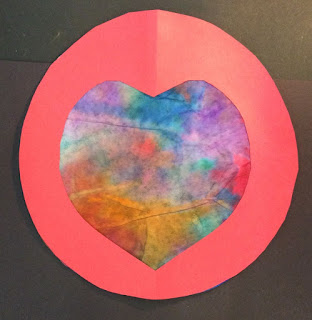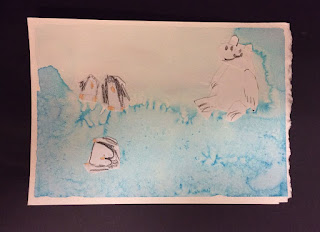 |
| Student work |
Let me start by saying, most days I really love my job because I love the kids. I love the amusing things they come out with that send me chuckling in my head. Most of the time it would not be appropriate for me to laugh out loud although I'd really enjoy a huge belly chuckle! Occasionally, I let those huge belly laughs escape and expose that amused side of myself despite my best intentions.
So here is my latest why I love my students. Yesterday was a half day for students and my classes were 5, 4, and 3. I really enjoy working with the upper grades. Let's face it, they are so much more capable, less needy and less whinny; for the most part. One of my classes had a huge number of students absent due to just being out and also instrument classes. What I had planned for them was going to be severely impacted by all those absences. I decided to reward them for their attendance with a free art day. Free art always means I will get a long list of drawing request. I'm not sure why they like for me to draw for them, but they definitely do and this is the reason for this post and why I really love my kids. I'm drawing something that a student has pulled up on the iPad, a pit bull, I think it was. Over my left shoulder I hear. "Why isn't Mrs. Hyman's work in a museum? She's a real artist." "Yeah, I know, they hang things like lines and dots in a museum and her drawing looks like something", from another. "Mrs. Hyman, is the story of 'The Dot' based on a true story or is it fiction?" from a student sitting next to me.
Yeah, I love my students. You can't have conversations like this anywhere else!













 I have done this project with my 2nd grade students for a number of years but felt I wasn't making the strong Math connections that I wanted. I was motivated to create a template for the project where students could more closely be involved in the measuring of the clay to make clearer connections. Here is the template I created. I made enough copies so each child would have their own and ran them through the laminator. It can be used like a place mat to actually do the work on.
I have done this project with my 2nd grade students for a number of years but felt I wasn't making the strong Math connections that I wanted. I was motivated to create a template for the project where students could more closely be involved in the measuring of the clay to make clearer connections. Here is the template I created. I made enough copies so each child would have their own and ran them through the laminator. It can be used like a place mat to actually do the work on. 

